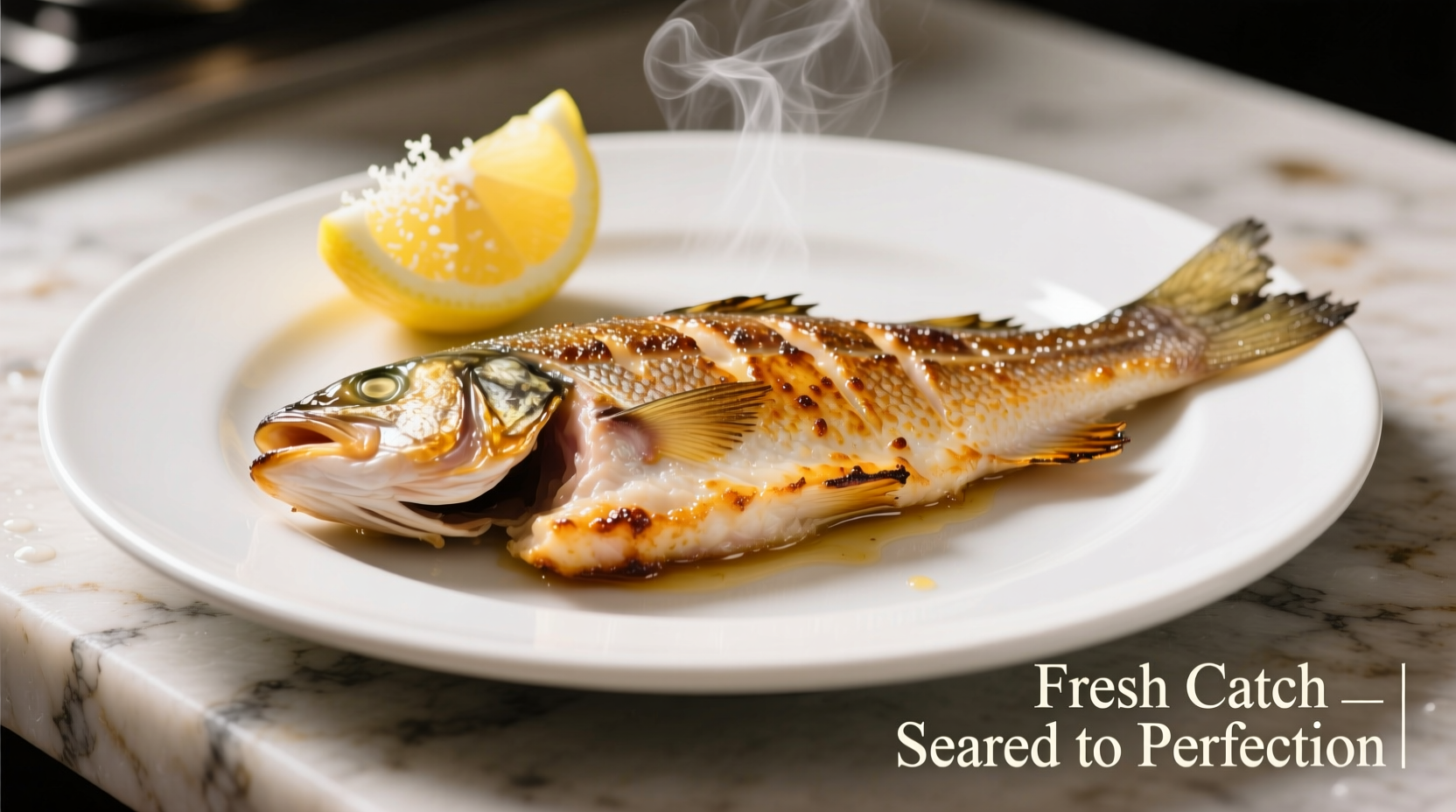If you're wondering how to cook grouper properly, the key is understanding this delicate fish's characteristics. Grouper has firm, mild-flavored flesh that responds best to gentle cooking methods between 350-400°F (175-205°C). Whether you're baking, pan-searing, or grilling, maintaining an internal temperature of 140-145°F (60-63°C) prevents overcooking while ensuring food safety. The following guide provides tested techniques used by professional chefs for perfect grouper every time.
Understanding Grouper: Selection and Sustainability
Before learning how to cook grouper, you need to select quality fish. Grouper comes in several varieties including red, black, and gag grouper, each with slightly different flavor profiles. When shopping, look for firm flesh with a fresh, ocean-like smell—not fishy. The flesh should be translucent with no brown spots.
Sustainability is crucial when learning how to cook grouper. According to NOAA Fisheries, some grouper species face overfishing concerns. Red grouper populations in the Gulf of Mexico have recovered significantly since 2014 due to management measures, while some other species remain vulnerable. Always check the NOAA Fisheries grouper information for current status and consider sustainable alternatives like U.S.-farmed cobia when appropriate.
Essential Preparation Techniques
Proper preparation is half the battle when learning how to cook grouper. Follow these steps for best results:
- Dry thoroughly: Pat fillets completely dry with paper towels—moisture prevents proper searing
- Salt ahead of time: Season with salt 15-20 minutes before cooking to enhance flavor and texture
- Bring to room temperature: Remove from refrigerator 20 minutes before cooking for even heat distribution
- Skin handling: If cooking with skin, score it lightly to prevent curling during cooking

Four Reliable Methods for Cooking Grouper
Understanding different cooking approaches is essential when mastering how to cook grouper. Each method offers unique advantages depending on your equipment and desired outcome.
| Cooking Method | Temperature | Cooking Time | Best For | Key Tip |
|---|---|---|---|---|
| Pan-Searing | Medium-high heat (375°F) | 3-4 minutes per side | Thick fillets, restaurant-quality crust | Use clarified butter for higher smoke point |
| Baking | 400°F (205°C) | 12-15 minutes | Delicate preparations, minimal cleanup | Place on parchment for easy release |
| Grilling | Medium heat (350°F) | 4-5 minutes per side | Summer cooking, smoky flavor | Oil grill grates thoroughly to prevent sticking |
| Poaching | Gentle simmer (180°F) | 8-10 minutes | Salads, delicate presentations | Use court-bouillon for added flavor |
Pan-Searing Grouper: Step-by-Step
Pan-searing creates the perfect golden crust while keeping the interior moist—a favorite technique for how to cook grouper fillets.
- Heat 2 tablespoons of oil in an oven-safe skillet over medium-high heat until shimmering
- Season grouper fillets with salt, pepper, and a light dusting of paprika
- Carefully place fillets skin-side down (if applicable) in the hot pan
- Cook undisturbed for 3-4 minutes until golden brown
- Flip and cook for 2 minutes more, then transfer skillet to 400°F oven for 3-4 minutes
- Check internal temperature reaches 140-145°F (60-63°C) using an instant-read thermometer
- Rest for 5 minutes before serving
Flavor Pairings That Elevate Grouper
Knowing how to cook grouper properly includes understanding complementary flavors. Grouper's mild taste pairs beautifully with:
- Citrus: Lemon, lime, or orange brighten the delicate flavor
- Herbs: Dill, parsley, and tarragon work particularly well
- Spices: White pepper, paprika, and a touch of cayenne
- Sauces: Beurre blanc, mango salsa, or simple garlic butter
Avoid overpowering seasonings that mask grouper's natural flavor. When experimenting with how to cook grouper, start with simple preparations before trying more complex flavor profiles.
Critical Mistakes to Avoid When Cooking Grouper
Even experienced cooks make these common errors when learning how to cook grouper:
- Overcooking: Grouper becomes dry and tough beyond 145°F internal temperature
- Crowding the pan: Prevents proper searing and causes steaming instead of browning
- Moving too soon: Flip only once to allow proper crust formation
- Skipping the rest: Always rest fish 5 minutes before serving to redistribute juices
- Using low-quality oil: Choose high smoke point oils like avocado or grapeseed for searing
Serving Suggestions for Perfect Grouper Dishes
Complete your how to cook grouper experience with these serving recommendations:
- Pair with light starches like roasted potatoes, quinoa, or rice pilaf
- Complement with seasonal vegetables—asparagus in spring, zucchini in summer
- Serve with a wedge of lemon and fresh herbs for brightness
- Consider Mediterranean flavors with olives, capers, and tomatoes
- For special occasions, top with a delicate beurre blanc sauce
Frequently Asked Questions
What's the best temperature for cooking grouper?
The ideal cooking temperature for grouper is between 350-400°F (175-205°C). For internal temperature, cook until it reaches 140-145°F (60-63°C) at the thickest part. This ensures food safety while maintaining moist, flaky texture without overcooking the delicate flesh.
Should I remove the skin before cooking grouper?
Leaving the skin on when cooking grouper provides protection during cooking and creates a delicious crispy texture. Score the skin lightly before cooking to prevent curling. If you prefer skinless grouper, remove it after cooking when the fish is more fragile and easier to handle without breaking.
How can I tell when grouper is done cooking?
Grouper is done when it reaches an internal temperature of 140-145°F (60-63°C) and flakes easily with a fork. The flesh should change from translucent to opaque white throughout. Avoid waiting until it's completely white throughout, as this indicates overcooking. The center should still appear slightly moist when checking for doneness.
Can I cook frozen grouper without thawing first?
While possible, cooking frozen grouper directly isn't recommended for best results. Thaw grouper in the refrigerator for 24 hours before cooking. If pressed for time, place the sealed fish in cold water for 30-60 minutes. Cooking from frozen typically leads to uneven cooking and potentially dry edges with undercooked centers when learning how to cook grouper properly.











 浙公网安备
33010002000092号
浙公网安备
33010002000092号 浙B2-20120091-4
浙B2-20120091-4